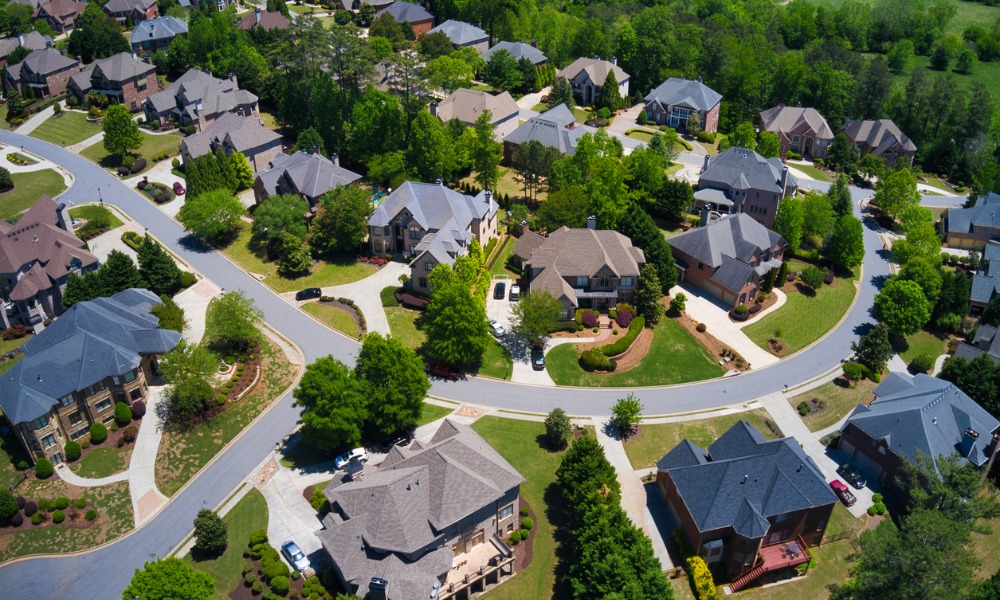Low cost of living is a big factor in choosing whether to live in the suburbs vs. urban areas. Read on to know which of the two is cheaper

Updated July 30, 2024
When deciding where to live, property buyers in the United States weigh the pros and cons of two locations: the suburbs versus urban areas. Some Americans prefer the more relaxed pace of the suburbs, while others enjoy the buzz and excitement of urban living. It all boils down to the home buyer’s specific needs and preferences.
In this article, Mortgage Professional America will discuss everything you need to know about living in the suburbs versus urban areas. We will explore their similarities and differences and the cost of living in either location. The transportation and commuting patterns will also be discussed for better comparison.
To mortgage professionals out there who are our longtime readers, you can treat this piece as another one of our client education series. Help home buyers differentiate the suburbs versus the urban areas by sharing this with your leads and clients!
What qualifies as a suburb?
What’s considered a suburb in the US is not as clearly defined as one might think. It is difficult to apply one definition to all suburban areas since most of these locations are qualified by many factors. The same is true for the inner cities within these commercial areas. Some of these factors include:
- total land area
- size of the population
- intended use or function of properties within the area
To know more about what a suburb is, watch this clip:
What is the difference between suburban and urban areas?
Knowing the difference between suburban and urban areas will help home buyers better understand what qualifies as a suburb. The Pew Research Center and the US Department of Housing and Urban Development (HUD) have defined suburban and urban areas in many ways. From these definitions, two factors have emerged as differentiating indicators:
- centrality
- density
Centrality is the qualifier of a location. It indicates whether the site is a suburb or part of an urban area. On the contrary, density is the quantifier. Below is a closer look at both indicators:
Centrality
Centrality qualifies a place based on its importance to the entire region. Greater metropolitan areas are considered the center of every region in the US since it commands economic and social influence.
The surrounding territories of the center city share industries and retail hubs. They also connect most of the transportation network to the outer parts of the main city. Large commercial spots and towering buildings also form part of these metropolitan areas.
Suburbs, on the other hand, tend to be farther away from the commercial center. These are mostly residential areas. One can find more houses and apartments than sky-reaching buildings in the suburbs.
Speaking of commercial centers, if you run a business and want to buy a commercial real estate property in your metropolitan area, you need to learn about commercial mortgages. Check out what a commercial mortgage is and learn everything in this article.
Density
As for density, it quantifies an area based on the concentration or number of people within a particular location. As opposed to central cities where the population density is higher, the number of residents in the suburbs is fewer. This translates to bigger spaces for housing and roads.
What makes a city a suburb?
A city can be considered a suburb if it is not within the central metropolitan site of a particular region. Cities and towns surrounding the focal point of commerce and business can also be considered as suburban. These locations are mostly residential and are less populated.
To distinguish the suburbs from the urban areas, the easiest way is by referring to the principal municipality in a metropolitan location as the main city. As for everything else surrounding the center, these locations pertain to the suburbs.
This easy distinction makes more sense in areas like Austin, Texas, where the population in the city limits comprises nearly half of the overall metropolitan region.
In other areas it is a little grayer, such as the Bay Area with a population of over 7.7 million. The city of San Francisco makes up a little over one-eleventh of the population of the overall metropolitan area since it has about 873,965 residents.
In this case, anyone who lives in a high-rise apartment in downtown Oakland would technically be living in the suburbs. On the other hand, those who are residing in a single-family home in a more residential area of San Francisco would be living an urban lifestyle.

Are suburbs more expensive?
The general answer is no. Home buyers can save more on housing when they choose to live in the suburbs instead of the metropolitan areas. Property prices tend to be less in the suburbs on a price-per-square-foot basis by more than 23% as compared to the main cities.
The strategic location of houses and apartments in the metro also contributes to its skyrocketing prices. Pricey residences are situated in places with easy access to public transportation. These elements make residential properties in urban areas more expensive than those in the suburbs.
Suburban home prices have increased since the pandemic
However, that is not always the case. After the COVID-19 pandemic, there has been a shift in favor of the suburbs in the US. In turn, the demand for more houses in the suburbs suddenly rose. Competition within the real estate market has also increased.
And due to higher demand and competition, the average property price in the suburbs has drastically moved upward. In fact, home values in the suburbs have risen faster on an annual basis than their urban counterparts.
A typical suburban home’s value in the US rose exponentially in the aftermath of the pandemic. The typical urban home, on the other hand, gained less during that same time period. This suburban outpacing of urban households has not been seen since January 2013, when home values started their recovery after the housing crash.
While urban markets are also seeing incredible growth, the suburbs are seeing a greater demand in most of the nation.
Why do people prefer suburbs?
There are many reasons why people typically prefer to live in the suburbs versus urban areas. Some of them are:
- space
- affordability
- greener environment
- low crime rate
- landscape and house design
Let’s check each one of them below:
Space
Perhaps the most obvious reason why people prefer the suburbs is the amount of space they can get. If anything, the COVID-19 pandemic spurred even more devoted urbanites to flee small, expensive apartments in many downtown cores. Suburbs usually offer home buyers and renters wide-open spaces and lower population densities.
Affordability
Another key draw for the suburbs is affordability. Property buyers can expect more square footage for less money in the suburbs than most major centers. This is mostly the case whether they are looking to buy a property or rent one.
Looking for the perfect location to buy a home but on a budget? Check out this article on the cheapest states to buy a house in the USA.
Greener environment
Getting back to nature and living in greener environments are other reasons why many residents prefer the suburbs. While most urban centers contain designated green spaces, people usually prefer to be surrounded by grass and trees everywhere they go.
The design of a typical suburb consists of tree-lined streets even around cul-de-sacs. This attracts more home buyers and renters who want to reside in places with a more natural feel.
Low crime rate
While crime in cities has been on the decline for years now, anyone who remains concerned favors gated communities in the suburbs. But whether in a gated community or not, suburbs tend to see less overall crime than the downtown core.
Landscape and house design
More than cities, the suburbs offer yards and even apartments with balconies that overlook well-tended landscaping. Since house prices are lower, buyers can use their funds to renovate and add more structures to their homes.
Transportation and commuting patterns
Public transportation is more accessible in the urban areas as suburbs tend to be car-centric. While urbanites need to pay for commuter train passes and bus tickets, suburban residents might sometimes spend more on gas and maintenance for their cars.
Those who work in the central urban areas but live in the suburbs would need to allot more time when travelling via private vehicles. Heavy traffic and the distance from one’s workplace should also be considered.
Check out this informative video from Not Just Bikes on how suburbia is subsidized and why car-centric suburbs are becoming a problem in the US:
Cost of living in the suburbs vs. urban areas
While the differences in living in the suburbs versus urban areas vary from region to region, there are distinctions between the two that are held pretty much everywhere.
One is that housing and the cost of living generally are more expensive in cities than in suburban areas. Living in the suburbs will also afford you more space than living in the downtown core.
Living in urban areas can still be beneficial
But while housing and cost of living are usually more favorable in the suburbs, urban areas offer more job opportunities. This is due to the number of businesses and commercial spots within the main cities.
As for social and cultural offerings, urban areas tend to be the melting pot for most regions. Multiculturalism is more prevalent in these locations since tourists and foreign nationals are most likely drawn to the metropolitan areas versus the residential suburbs.
Buying a property in the suburbs vs. urban areas
For home buyers, purchasing a home in the suburbs versus urban areas can become stressful when they are uninformed about both locations’ similarities and differences. Suburban properties are usually cheaper but farther away from the city center. Urban properties are more expensive but closer to retail shops and businesses.
Suburbs often have more space and quieter neighborhoods, while cities have more amenities and job offerings. All in all, it depends on three things about the home buyers’ personal profile. They should evaluate their budget, lifestyle, and personal preferences when deciding between a suburban or urban property.
Whether you plan to buy a property in the suburbs or the urban areas, you should engage the services of a seasoned mortgage broker. It is also helpful to apply for a home loan with top banks and mortgage lenders. Experience quality service with mortgage professionals and find them on our Best in Mortgage page.
Between suburbs vs. urban areas, which do you prefer and why? Feel free to comment below.



